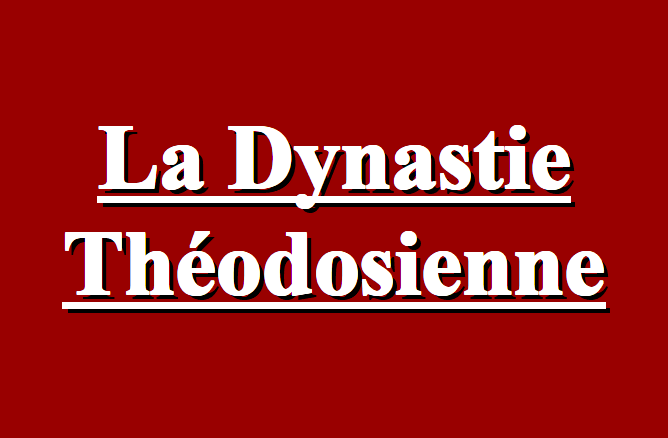Hi to all of you ! How are you ? Last week, I introduced you to the Julio-Claudian dynasty. We will then see the continuation of Roman history with the presentation of the Flavian dynasty. We will thus see here, of whom this one in particular was composed, at what time did it exist…. Now let’s get to the heart of the matter and, above all, enjoy your reading.
Context of the emergence of the Flavian dynasty
Following the fall of the Julio-Claudian dynasty, a unique year will pass. This is the “year of the four emperors” which took place in 69 AD. As the name suggests, this year saw a succession of four Roman emperors. Respectively Galba (June 8, 68 AD – January 15, 69 AD), Otho (January 15, 69 AD – April 16, 69 AD), Vitellius (April 19, 69 AD – December 22, 69 AD) and Vespasian (December 22 69 AD – 23 June 79 AD). The latter being the first “Flavian” emperor.
This year therefore saw three short-lived reigns succeeding each other and which had many points in common. Indeed, among these three reigns, each emperor found himself in difficult conditions and had to face revolts, in particular those of legions. In all three cases, the emperors died in violent ways. Galba was beheaded, Otho committed suicide, and Vitellius was stoned. This series of short reigns ended with the arrival of Vespasian who ended it by reigning for about 10 years.
Who made up the Flavian dynasty?
The Flavian dynasty was made up of three emperors who all reigned in the 1st century AD. Indeed, it lasted from 69 to 96 AD. She therefore saw the 9th, 10th and 11th emperor succeed one another. These were Vespasian (December 22, 69 AD – June 23, 79 AD), Titus (June 24, 79 AD – September 13, 81 AD) and Domitian (September 14, September 81 AD – September 18, 96 AD). JC).
Now that we know the makeup and background surrounding the Second Roman Dynasty, let’s take a look at what happened during that roughly 30-year span. That is three times less than that of the Julio-Claudians.
The history of the Flavians
The Flavian dynasty therefore began with the reign of Vespasian which was the longest reign since that of Nero. During his reign, he enabled the Empire to recover from the Civil War. For this, he put various reforms in place, both fiscal and legislative. For example, for tax reforms, he implemented a reform on public toilets. Today, it is from here that we derive the name “vespasian” and the expression “money has no smell” that Vespasian pronounced when he explained to Titus that this money coming from toilet was quite clean and therefore odorless. He also reorganized the army and restored Rome, which had been the victim of numerous fires. He was also very active in the construction field. Moreover, the Colosseum in Rome was built thanks to him.
The reign of Vespasian thus took place in good conditions and allowed the Roman Empire to recover from the Civil War and to strengthen itself.
The dynasty continued with a short reign, about 2 years, that of Titus. He was first a person with many faults and bad habits. But as soon as he came to power, he abandoned all this bad side to acquire a good side. He ceased thus, luxury for the benefit of simplicity, entertainment for the benefit of meetings… During his reign, he had little luck. Indeed, there were different plague epidemics, a catastrophic fire in Rome and the eruption of Vesuvius. However, in every situation the emperor got involved in person to help the victims and the sick. For example, through grants and redistributions of wealth (wealth no longer belonging to anyone), he helped the victims of Pompeii and Herculaneum. He also helped, by meeting them and by comforting them the patients of the plague, disease of which he died besides during the epidemic which struck Rome.
Titus was therefore a good emperor even if his beginnings did not suggest it. As a result, he completely changed his state of mind. From a bloodthirsty Nero-like figure to an emperor close to his people and wanting only to do good. And although he only remained in office for two years, he really made an impression in a good way.
The Flavian dynasty ended with the reign of Domitian. During his reign, he made campaigns as in Brittany but also wars against the Germans and the Dacians. In addition, he launched a reconstruction program for Rome which had been affected by several fires and revalued the coin. Indeed, the weight of the deniers went from 2.87g to 3.26g then from 3.26g to 3.04g.
Domitian was therefore an emperor who helped consolidate the Empire and rebuild Rome. He was therefore loved by the Romans except by members of the Senate who viewed him with a dim view.
Summary
The Flavian dynasty was therefore short and only saw three emperors (Vespasian, Titus and Domitian) succeed one another, but the latter were good and appreciated by the people. They enabled the Empire to rise and prosper. This period of about thirty years was monotonous in the sense that it passed, if one generalizes, under good conditions as regards the facts of the emperors and their results.
This article is now complete. Hope you enjoyed it, if so please let me know in the comments space and also tell me what topic you would like me to cover in a future post. In fact, the next one will focus on the third Roman dynasty: “the Antonines”. See you next week !
Receive my free book Around the Roman Coin by clicking here




